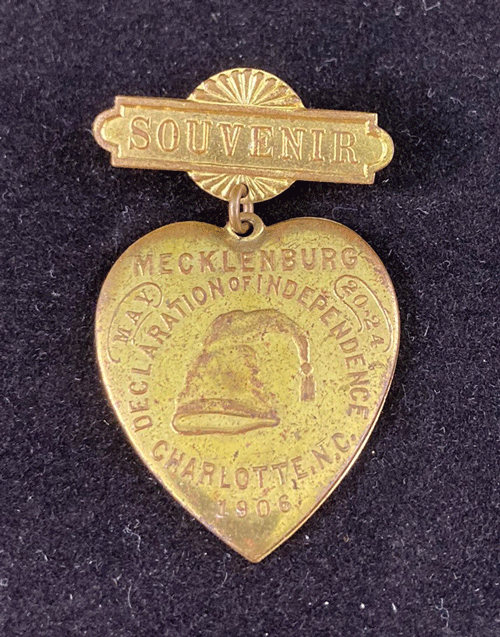While Charlotteans were celebrating (in their nightcaps?) the 131st anniversary of the Meck Dec — and commemorating it with this brass badge — big trouble was on the way.
“Despite North Carolina’s efforts,” Ronnie W. Faulkner writes in NCpedia, “a number of scholars outside the state maintained that the Mecklenburg document was a fraud. The ultimate scholarly blow came in 1907 with the publication of William Henry Hoyt‘s The Mecklenburg Declaration of Independence: A Study of Evidence Showing That the Alleged Declaration of Mecklenburg County, North Carolina, on May 20th, 1775, Is Spurious.
“Using the latest methods of scientific history and internal criticism, Hoyt maintained that the evidence was overwhelming that the reconstructed declaration was a misconstruction of the Mecklenburg Resolves of 31 May 1775, which contemporary newspapers proved had been written. Most North Carolinians ignored Hoyt’s work, but not Samuel A. Ashe, editor, historian, and descendant of one of the state’s most prominent families. The first volume of Ashe’s History of North Carolina (1908) presented both sides of the issue but ultimately agreed with the naysayers.
“A bitter fight broke out in the North Carolina General Assembly over a bill authorizing the purchase of Ashe’s book for the public schools. House Speaker Augustus W. Graham, the son of a governor and descendant of a ‘signer’ of the Mecklenburg Declaration, took the floor and defeated the authorization bill. Opponents of the measure, appealing to patriotism, noted that the date of 20 May was enshrined on the state flag and seal….”

